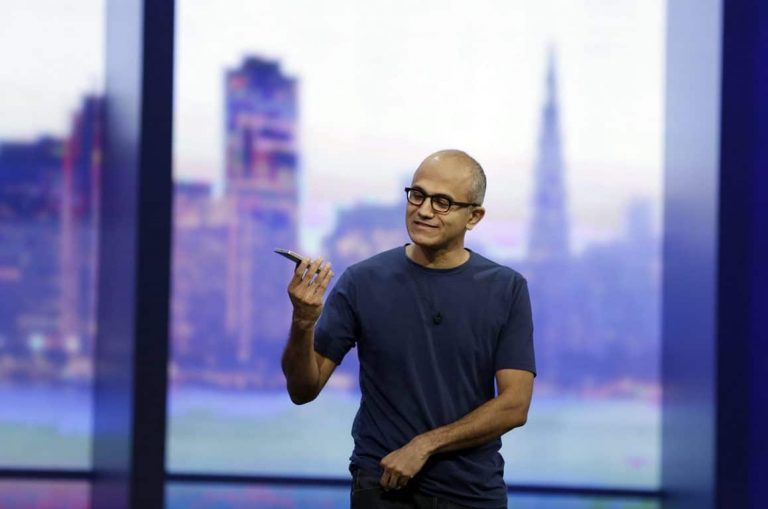It’s not secret among people who follow Microsoft as a company that its mobile business — comprised of Lumia handsets, some basic phones, and Windows 10 Mobile — is not doing so great.
In its most recent earnings report, which covers the three months leading up to April, Lumia sales dropped 46% after falling 49% over the holiday period, which is when sales of devices are traditionally the strongest.
This news puts more weight behind the idea that Windows 10 Mobile is not where Microsoft should “lead” — as Terry Myerson, the head of Windows, put it — and that, really, the company should focus on what it can do well, rather than what it can just do.
However, there has, for some time, been the idea that Microsoft may have one last chance: the Surface Phone.
The idea behind the Surface Phone is simple: Make a high-powered phone which runs Windows 10 and sell it to businesses and people who rely on Microsoft’s software.
As I have written before, there is actually an appetite for Windows-based mobile devices within businesses, especially as many companies realize that catering to multiple versions of multiple operating systems in the workplace is expensive and time-consuming.
If Microsoft could get something together that offered these things — powerful hardware, Windows 10, the Office suite — and sold it in a bundle with its other services then it may — may — just have a chance at pulling something from the wreckage that is a 46% decline in sales in three months.
Microsoft has never officially confirmed or denied the existence of the Surface Phone, although there is too much smoke for there not to be fire, even if it is a small one. The strongest piece of evidence came from Panos Panay, the head of Surface within Microsoft, who gave an answer that was just shy of “no” when the Surface Phone came up.
“I think you have to continuously check the landscape of what needs to happen next in all our device categories,” he said. “We’re working on a lot of stuff.” Of course, “a lot of stuff” doesn’t necessarily mean a Surface Phone just as it may not mean a Microsoft “Clip” wearable.
But now, it seems that Microsoft’s ambitions for the Surface Phone are quite possibly dead because Intel, the chip-making giant, has decided to kill off its Atom processor project.
For those who are unaware — which, I guess, is likely many — the Atom project as essentially Intel’s version of Qualcomm’s Snapdragon or Apple’s A-series processors that consume little energy but can power big, rich applications.
After falling sales and a general decline in its businesses, Intel announced last week that it planned to cut 12,000 jobs and shutter some projects so it can focus on enterprise chips, which is a field that it currently leads in.
An Intel spokesperson confirmed to PC World that development of Atom chips, codenamed “Sofia” and “Broxton,” would be halted in order to focus on “products that deliver higher returns and advance our strategy.”
Why does it affect the Surface Phone? Because, by and large, the Atom was the only processor that could have powered the device.
To understand why, it’s best to look at what makes Windows so useful to businesses: legacy apps. Almost all of the apps — or programmes as they used to be called — that businesses use are based on the Win32 architecture which means that for the Surface Phone to be useful it needs to run these apps.
Mobile processors, like the Snapdragon CPU in the Lumia 950, can’t run these apps which makes them kinda pointless to a business that relies on them, which is basically every business.
Microsoft has tried to fix this by making Windows 10 very, very developer friendly but it remains a fact that to be truly useful to businesses, a Windows-based phone needs to run legacy apps.
Of course, it’s possible that Microsoft will figure out a way to work this out. One of the “Bridge” projects — codenamed “Centennial” — does focus on making it easier for developers to port legacy apps into the Windows 10 Store, which doesn’t solve the problem of Win32 apps on ARM processors but is a step in the right direction.
For Microsoft, though, it would be so much easier to just support older apps at a hardware level, which would take the weight off of developers and categorically ensure that their apps would run on Windows 10 Mobile devices. Without a mobile version of the X86 architecture, however, i.e., Atom, Microsoft’s job is made significantly more difficult.
Microsoft now has several options:
- Kill the Surface Phone. This may seem like a drastic step, but without Intel it doesn’t seem like the dream — a phone that can run Windows 10, legacy apps and all — is realistic.
- Develop its own chips. This may not solve the issue of backwards compatibility, but it would give Microsoft more freedom to work through the problem. Developing chips, however, is costly, time-consuming, and not something Microsoft has much expertise in.
- Hope and pray that developers build new apps for Windows 10. This seems like the most likely course of action, especially as developers and businesses are generally pretty interested in the new operating system. According to surveys, Windows 10 is seeing a greater adoption rate from enterprise clients that any version in recent memory.
All of these options are sub-optimal and Microsoft’s mobile efforts will most likely just continue to chug along, with falling Lumia sales quarter-after-quarter with no end in sight. There may be a slight pickup if Microsoft chooses to bundle Windows and Lumia together, but nothing of any great significance.
All in all, the death of the Atom chip is more of a setback for Microsoft than it is for Intel and will likely spell doom to the long-rumoured Surface Phone.


